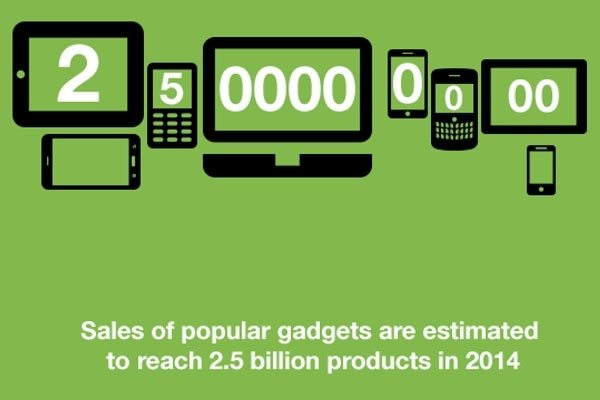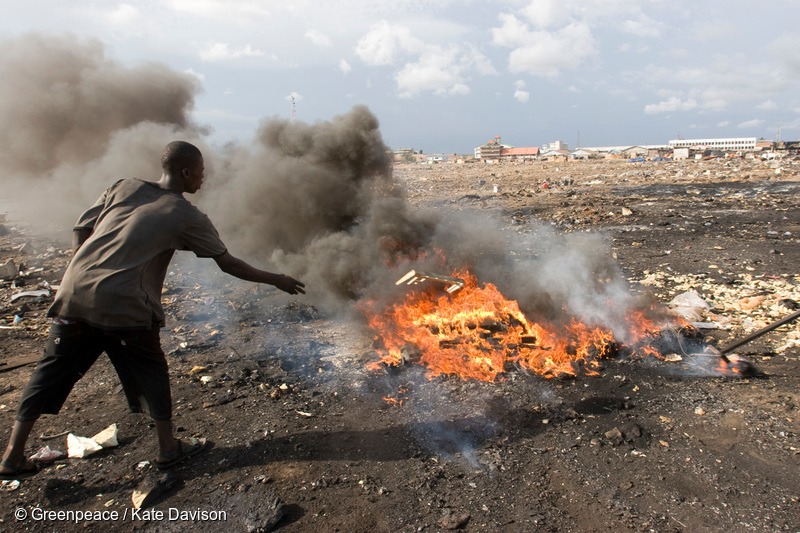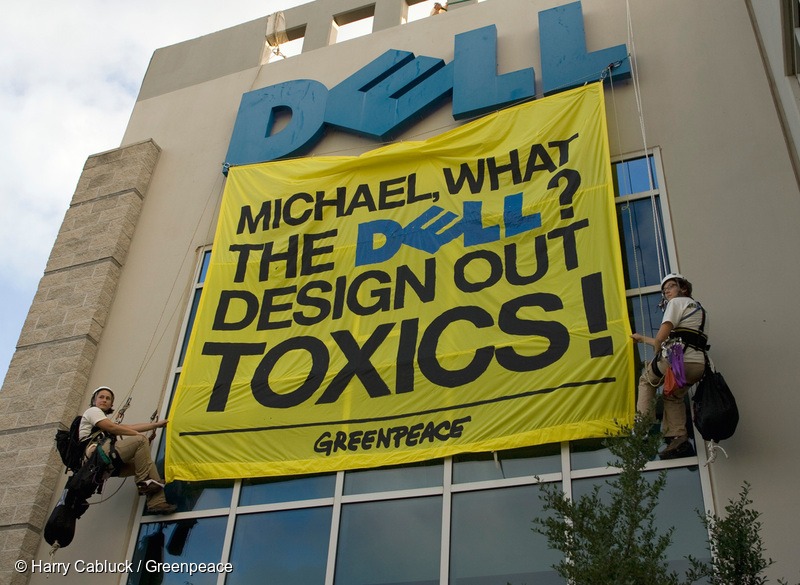It’s predicted we will buy 2.5 billion mobiles, computers and tablets in 2014 and there will soon be more Internet connected devices than people on the planet.

As the number of gadgets we own explodes, how they are made, used and disposed becomes more important than ever.
Since 2006, thanks to pressure from customers and public campaigns, the big electronics companies have made steps in the right direction; some devices now contain less hazardous substances and are more efficient. The trouble is, many leading names have failed to act with the ambition we need to combat the industry’s growing environmental footprint. Take dangerous e-waste: in 2012, electronics devices were already creating nearly 8kg of e-waste for every person on the planet. Without truly progressive, innovative solutions from the industry, the combined environmental impact of our gadgets will just keep growing.

A boy burns electronic cables and other electrical components in order to melt off the plastic and reclaim the copper wiring. This burning in small fires releases toxic chemicals into the environment.
The Problems
To address the sector’s growing impact there are 3 big issues electronics companies need to urgently fix:
1) E-wasted
Making billions of devices that often last for just a couple of years is a) incredibly resource intensive and b) incredibly wasteful if all the energy, raw materials and chemicals used in electronics are discarded as e-waste.
2) Toxic Truth
Many of the hazardous substances currently used in the products and in manufacturing can damage human health and the environment, especially in manufacturing centres in China, Taiwan, South Korea and Japan.
3) Designed for the dump
Today many of our products are designed to become obsolete with no or little ability to repair or upgrade, fuelling a throwaway culture that leads to greater resource consumption and creating mountains of waste.
The Solutions
But the solutions already exist and some companies are showing they know what needs to be done.
1) An Energy Revolution
Increasing renewable energy use in manufacturing is key to reducing the environmental footprint of our products. Apple is building the world’s first electronics components factory powered only by renewable energy in the US. With solar power growing fast in manufacturing centres like China and Japan, wouldn’t it be great if our devices were made with 100% renewable energy? It’s time to think big.
2) A Toxic-Free Future
Half of the mobile phone market is now free of the worst hazardous chemicals, up from zero in 2006. That’s progress. What if companies extended that to all products and followed the example of leading clothing brands by ‘Detoxing’ their entire supply chains? It’s possible. Our gadgets should not come at the price of human health or the safety of our future generations.
3) Design innovation: Products made to last
The sector must shift to providing products that have a long lifespan and are easily upgraded and repairable. As more and more devices are sold we must make sure we can get the most out of the resources and energy used in electronics manufacturing. There are already examples of innovation along these lines, for example Phoneblocks and Motorola’s Project Ara, that allow users to repair or replace their devices.

Greenpeace activists unfurl a banner at Dell Computer’s world headquarters. The message is for the computer company founder and CEO and reads: “Michael, What the Dell? Design out Toxics!”
Designing the future
With your support, we will continue to challenge one of the most innovative, fast-moving and forward-looking industries to live up to its reputation as a trendsetter. Using their vast knowledge, power and resources electronics leaders have the potential to make gadgets that are not only perfectly designed for customers, but also for our planet.
Gadgets we can all be proud to own.
Read the latest Greenpeace International report into the sector here: Green Gadgets: Designing the future


